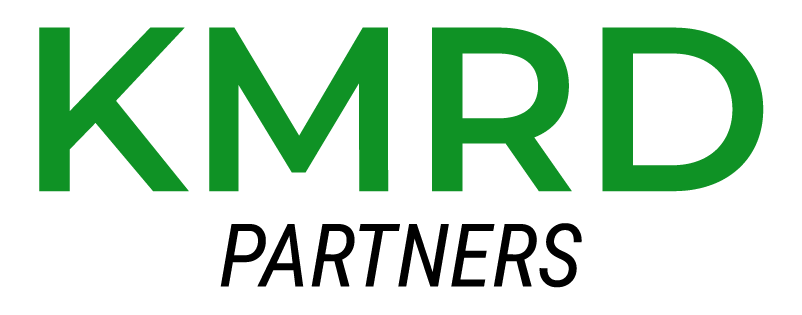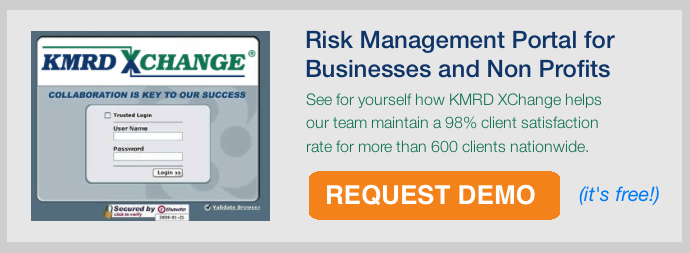Important Insurance Related Provisions within Commercial Contracts
Your insurance professional should review the insurance provisions in your contracts prior to signing the documents. Why? Because the insurance-related risks are not always obvious and may result in a costly uninsured surprise.
Well-negotiated contracts can be the least expensive and most effective way to mitigate or transfer risks. However, contracts with customers, suppliers, and subcontractors can be complex and time-consuming to negotiate. Business owners often fail to consult with their insurance professionals on the implications of these contracts to their insurance needs or contractual obligations. Often their insurance agents are not qualified to extract all of the risks related to the insurance provisions. This can leave insurable exposures unattended. The failure to dovetail your commercial insurance program with your contract obligations can lead to significant uninsured risks and even bankruptcy.
KMRD Partners Wins Award Honoring Ethics in the Workplace
Here’s what you – and your attorney – should know about your contract insurance provisions:
1. Spell out who is responsible for insuring what – Well written insurance provisions in contracts will clearly define each party’s insurance obligation. Too often, this language is written by an attorney who is not familiar with insurance terms creating vagueness and misunderstandings. For example, a lease could read as follows: “Tenant is responsible for insuring their personal property and leasehold improvements…. The Landlord is responsible for insuring the building….” In this case, your insurance representative should review and assist in making sure the language to ensure your policy will respond as it should.
See also: Other Blog Posts on the Importance of Well Structured Contracts
2. Include clear insurance requirements that make sense – This should be the easy part for the insurance professional. Many contracts include a run-on paragraph utilizing antiquated or inappropriate insurance terms such as “all risk coverage” (no such thing), “Broad Form Property Damage Liability” (no longer an issue since 1986). The problems caused by outdated terminology can be severe.
A qualified insurance professional should be able to help craft clear, concise requirements customized to fit the scope of your contract including:
- Property and Contractors Equipment with a Waiver of Subrogation clause – If your subcontractor’s equipment is damaged or stolen while on your site there is a chance their insurance company will pursue you legally alleging your negligence (such as poor security) caused the loss. On the other hand, you do not want your valuable client sued by your insurance company! A waiver of your carrier’s rights against another party is generally allowable without the need to ask the carrier’s permission as long as it is done prior to the incident.
- General Liability – for allegations of bodily injury, property damage, personal injury (including false arrest, detention, or imprisonment; malicious prosecution; wrongful eviction; slander; libel; and invasion of privacy) and advertising injury (the use of another’s idea in your advertisements).
- Auto Liability and Physical Damage – Omitting this requirement eliminates your protection against any incident involving an auto.
- Workers Compensation and Employers Liability – Even if your contract is with a sole proprietor you carry the risk of suffering a workers compensation loss. A sole proprietor can allege they were an “employee” at the time of injury. Desperate people do desperate things. This is also true of independent contractors, 1099s etc. In addition, your insurance carrier may deem the lack of evidence of workers compensation coverage from your subcontractors when they perform their audit. This may enable the carrier to utilize the amount of the contract as payroll in the final audit of policy, creating a significant additional premium.
- Umbrella Coverage – Typical primary commercial policies only provide $1 Million of coverage which is not as much money as it used to be. The umbrella requirements can / should be altered based on the size and scope of the contract. For example, even a small electrical project done incorrectly can cause a catastrophic loss.
- Professional Errors & Omissions Liability (if applicable) – This can be critical and is often overlooked in contracts with service professionals
- Pollution Liability (if applicable) – If the relationship includes a risk of an incident involving a pollutant or the product is inherently a pollutant, this coverage can be very important. Often this exposure is overlooked or rationalized as being remote and therefore omitted.
- Information Risk / Cyber Liability – Cyber risks are everywhere. Technology and confidential information is used in almost every transaction today. An HVAC contractor was the source of Target’s breach causing a $250 Million loss. We recommend adding this to subcontractor insurance requirements.
- Commercial Crime with Third Party Coverage – Will the subcontractor have access to your facilities, computer systems or clients? Third Party Crime insurance will assist in protecting you from a theft of your or your client’s money by one of your subcontractor’s employees.
- Primary Non-Contributory Additional Insured Status – We always recommend an attempt to require all liability policies of your subcontractor include you as an “additional insured”. This status should also apply on a primary basis (the subcontractor’s policy pays first) and should never ask for a contribution from your policy (aka Primary & Non-Contributory Language). From time to time we see the requirement for a buyer to be named as an “additional named insured” which is completely different matter and almost always unavailable. Named insured status generally only applies to an entity with the power to purchase or cancel the subject policy and also carries the burden of most of the policy’s conditions.
- Maximum Deductibles – If your subcontractor carries an insurance deductible they cannot afford, it will become a problem for you. It is not unreasonable to ask for their policies to include “not to exceed” provision in your contracts.
- Solid Insurance Carriers – Always require the insurance companies be favorably rated by AM Best, a reputable firm who rates the claims-paying ability of insurance carriers. Generally, we recommend a requirement of A- (Excellent), Class VII or higher (Surplus of $50 -$100 Million).
Also see: Understanding Your Business Interruption Insurance
3. Understand and include waiver of subrogation requirements – Subrogation is a term describing an insurance company’s right to legally pursue reimbursement of payments from the party responsible for causing the loss. I know this was mentioned above in the context of a property insurance requirement but liability policies may also include the provisions waiving a carrier’s right of pursuing you in the event of a loss. These waivers can be either one-way or mutual. My lease mantra is…“Define who is responsible for insuring what. In the event of a loss, obtain the coverage to restore your property and eliminate each other’s carrier from hiring an attorney and filing a lawsuit.” This is what’s known as a “mutual waiver of subrogation” and it should be included in every lease. If it’s not, you could be blamed and sued by a carrier to recover the proceeds needed to rebuild an entire building.
4. Define who carries the liability burden and where? – Contracts should always attempt to define who is responsible for what. This can be key in joint venture or partnership agreements formed to work with other companies to accomplish a project. Leases (almost always) define what areas of the building, or plot, the tenant is responsible for. For example, the tenant is typically responsible for the actual space they occupy. If an employee or visitor slips and falls in the tenant’s space, the lease allows for the landlord to tender any lawsuits filed against them to the tenant’s insurance program. This becomes possible because the landlord is required to be named as an additional insured on the tenant’s insurance policy. The landlord typically asks to be held harmless and requires indemnification as well. We recommend the landlord also be required to add the tenant as an additional insured on the landlord’s general liability policy and be held harmless and indemnified for claims arising out of incidents which occur in the areas the landlord is responsible to maintain. Such as the parking lot, common lobby, or even the roof where work is being done by contractors.
5. Understand the issue of abatement provisions / condemnation – Typical leases include a clause which turns off the lease payments if the building is uninhabitable or condemned for more than 30 to 90 days. It’s important to understand this issue because it impacts the amount of business interruption insurance you may require.
6. Make sure to have clear and effective indemnification and hold harmless provisions – Hold harmless and indemnification provisions are an important risk transfer tool because they can apply regardless of whether the incident is insured or not. Insurance policies are a complex contract with many exceptions and conditions of coverage. Most business folks do not have the time to read every word of their own policy much less their subcontractors. However most every General Liability policy includes “Contractual Liability Coverage” which can be triggered by an indemnification clause inside your contracts. These paragraphs can be complex.
We stress the understanding each State interprets/enforces these paragraphs differently but case precedence has generally established an indemnification agreement must expressly transfer the risk of the negligence of the parties being indemnified to the indemnitors. In other words, it must clearly state the indemnification applies regardless of whether caused by the parties indemnified.
There are 3 levels explained in the context of a Buyer and a Seller:
- Limited Form – This means the indemnification only applies if the incident was alleged to have been caused by the Seller. This language does not transfer the risk of Buyer’s negligence to the Seller’s General Liability policy.
- Intermediate Form – is consistent with what is used by AIA (a construction industry standard). Intermediate Form applies even if the incident was alleged to have been caused in part by Buyer. When we are working for the Seller, we recommend eliminating the words “Regardless of whether caused in part by Buyer” and replace it with “Except to the extent caused by Buyer”. This change should eliminate the transfer of the risk of Buyer’s negligence to Seller’s General Liability Policy.
- Broad Form – This form is not allowable in some states. Broad Form Indemnification applies even if the incident was alleged to have been caused in whole or in part by Buyer. In other words, the risk of Buyer’s negligence will be transferred to Seller even if Seller had no involvement in the claim. When we are working for the Seller we recommend eliminating the words “Regardless of whether caused in whole or in part by Buyer” and replace it with “Except to the extent caused by the Buyer”. This change should eliminate the transfer of the risk of Buyer’s negligence to Seller’s General Liability Policy. If the words “in whole or” are eliminated, it converts to Intermediate Form.
Confused yet? Well, it won’t be if you work with a competent insurance and risk management professional who can assist you correctly. Also, we do not recommend relying solely on your attorney to structure and negotiate this language. It works best when they are working together for you.
Remember, not all commercial insurance programs are the same. It’s possible yours might need to be customized to comply with your contractual requirements, personal needs and risk appetite. Designing an insurance program without taking into consideration the agreements you sign is dangerous and can place you in breach of contract. When and if you do engage an outsourced risk management team, make sure to work with people who fully understand how contracts and commercial lease insurance provisions impact the business and your bottom line.
Contact us below to discuss how KMRD can help you mitigate your risks related to commercial lease insurance provisions.

Bob Dietzel is the Co-Founder and Principal at KMRD Partners Risk & Insurance Solutions, a leading risk management and human capital solutions firm the Philadelphia region.
Contact UsMeet the KMRD Team About KMRD
The content available on or through this e-letter is in no way intended to and shall not be construed to constitute professional medical, health, legal, tax or financial advice. KMRD Partners disclaims any liability or loss in connection with the content contained in this e-letter.
How KMRD Can Help:
KMRD delivers risk management and human capital solutions to over 700 clients nationwide. Our award-winning team, disciplined approach, proven processes, combined with our risk management portal make KMRD the leading choice to improve general liability protection and reduce the overall cost of risk.






